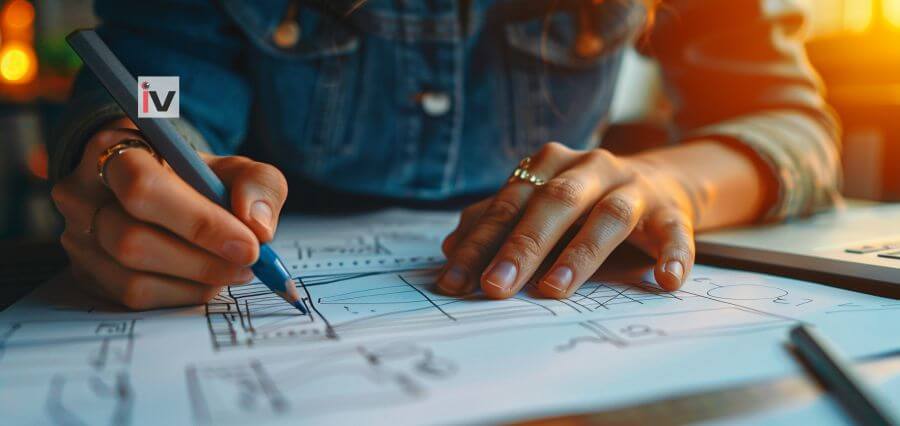The modern design landscape is a dynamic arena where creativity, innovation, and technology converge to redefine style. Designers today are not just creating visually appealing products; they are crafting experiences that resonate with people on a deeper level. From concept to creation, the journey of modern design is an intricate process that involves thoughtful ideation, meticulous planning, and the ability to anticipate future trends.
The Evolution of Design Thinking
Design thinking has evolved from being merely an aesthetic pursuit to a holistic approach that addresses functionality, sustainability, and user experience. Modern designers are problem solvers who use design thinking to create solutions that are not only beautiful but also practical and relevant. This shift in focus has led to the emergence of design as a critical factor in business strategy and innovation.
One of the key aspects of modern design thinking is empathy. Designers are increasingly putting themselves in the shoes of their users to understand their needs, desires, and pain points. This human-centered approach ensures that the final product is not only visually appealing but also intuitive and user-friendly. By prioritizing the user experience, modern designers are creating products and spaces that connect with people on an emotional level.
The Intersection of Technology and Design
Technology plays a pivotal role in modern design, enabling designers to push the boundaries of what is possible. The integration of digital tools and software has revolutionized the design process, allowing for greater precision, efficiency, and experimentation. From 3D modeling to virtual reality, technology has opened up new avenues for designers to explore and innovate.
In product design, for instance, the use of computer-aided design (CAD) software has streamlined the prototyping process, enabling designers to create and test multiple iterations of a product before it goes into production. This not only saves time and resources but also allows for more creativity and experimentation.
Moreover, the rise of digital fabrication techniques, such as 3D printing and laser cutting, has democratized design, making it accessible to a broader audience. Designers can now create complex and intricate designs that were once impossible or cost-prohibitive to produce. This technological revolution is empowering a new generation of designers to bring their ideas to life and challenge traditional notions of style.
Sustainability as a Design Imperative
Sustainability has become a central theme in modern design as designers grapple with the environmental challenges of our time. The shift towards eco-friendly materials, energy-efficient processes, and circular design principles is reshaping the industry. Modern designers are increasingly aware of their responsibility to create products and spaces that minimize environmental impact and promote sustainability.
In the fashion industry, for example, designers are exploring alternatives to traditional textiles, such as recycled fabrics, organic cotton, and biodegradable materials. The rise of sustainable fashion is a testament to the growing demand for environmentally conscious design. By embracing sustainability, designers are not only reducing waste and conserving resources but also creating products that resonate with a socially conscious consumer base.
Similarly, in architecture, the focus on sustainable design has led to the development of green buildings that prioritize energy efficiency, waste reduction, and environmental stewardship. Architects are incorporating sustainable practices, such as passive solar design, green roofs, and rainwater harvesting, into their projects. This commitment to sustainability is redefining what it means to be a modern architect and shaping the future of urban design.
The Influence of Cultural Diversity
Cultural diversity is another driving force behind modern design, as designers draw inspiration from different cultures and traditions to create unique and innovative products. This cross-pollination of ideas has led to a more globalized design aesthetic that celebrates diversity and inclusivity.
Designers are increasingly incorporating elements of traditional craftsmanship and indigenous techniques into their work, blending them with modern aesthetics to create something entirely new. This fusion of old and new, East and West, has resulted in a rich and diverse design landscape that reflects the complexities of our globalized world.
Moreover, cultural diversity is influencing the way designers approach their work, encouraging them to consider different perspectives and challenge conventional norms. By embracing diversity, modern designers are breaking down barriers and creating designs that are more inclusive and representative of the world we live in.
The Future of Modern Design
As we look to the future, it is clear that modern design will continue to evolve and adapt to the changing needs of society. The integration of technology, sustainability, cultural diversity, and collaboration will remain key drivers of innovation in design. Modern designers will continue to push the boundaries of what is possible, challenging traditional notions of style and redefining the role of design in our lives.
The minds behind modern design are not just creators of beautiful objects; they are visionaries who are shaping the future of our world. Their ability to blend creativity with practicality, tradition with innovation, and aesthetics with sustainability is what sets them apart as the architects of modern style. As they continue to push the boundaries of design, they are redefining what it means to be a designer in the 21st century and paving the way for a more sustainable, inclusive, and innovative future.
Read More: Click Here

